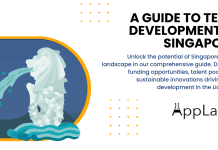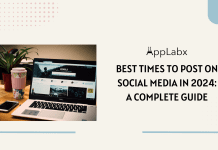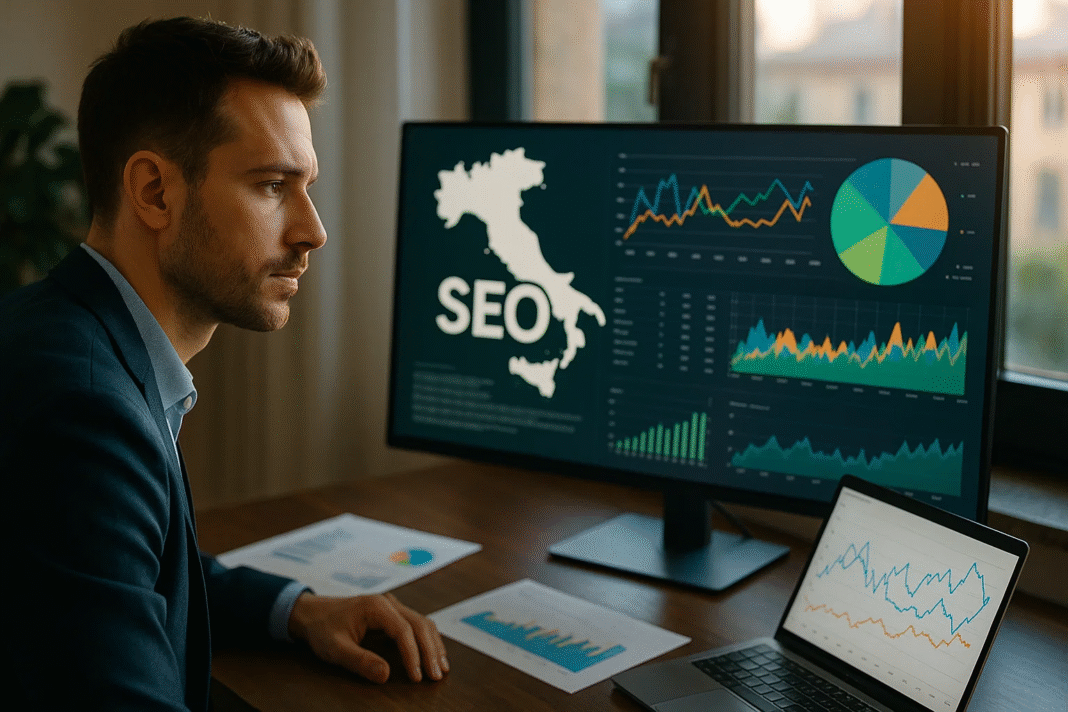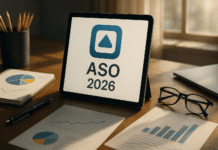Key Takeaways
- Mobile-first SEO is essential in Italy, with over 75% of searches conducted on smartphones, demanding fast, responsive, and user-friendly sites.
- Local SEO and geo-targeted strategies are crucial, driven by a surge in “vicino a me” searches and high local conversion rates.
- AI, voice, and visual search are reshaping the Italian SEO landscape, requiring businesses to adopt multimodal, structured, and E-E-A-T-compliant content.
Search engine optimization (SEO) in Italy has undergone a profound transformation in recent years. As of 2025, Italy’s digital ecosystem is witnessing the convergence of AI-driven search algorithms, evolving user behaviors, hyperlocal optimization trends, multilingual strategies, and mobile-first indexing—all redefining how Italian businesses compete online. With more than 87% of the Italian population actively using the internet and over 70% of them accessing it daily via mobile devices, the stakes for visibility in search engine results have never been higher.
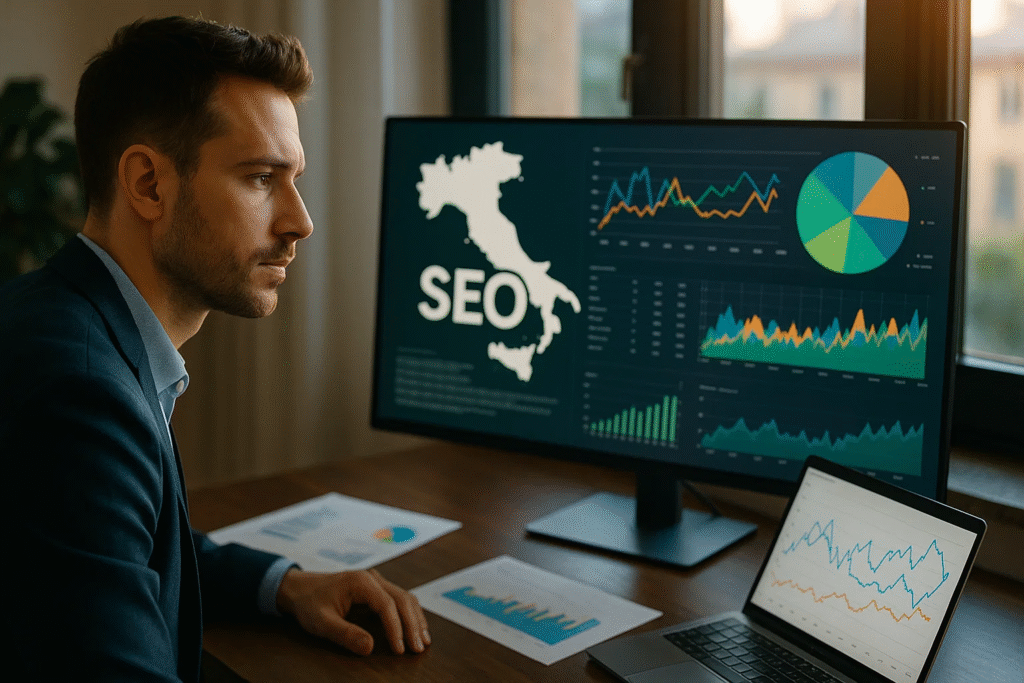
Italy’s digital economy is projected to exceed €90 billion in value by the end of 2025, with SEO playing a critical role in shaping brand visibility, e-commerce growth, and customer acquisition. From Rome’s tech startups to Milan’s global fashion houses, Italian brands are increasingly relying on search data, structured content, and performance analytics to outperform competitors. This shift toward data-driven SEO is also being accelerated by changes in user intent, the growing dominance of AI search assistants, and Google’s continuous updates to Core Web Vitals, now integrated with INP (Interaction to Next Paint) as a key ranking factor.
Moreover, Italian SEO in 2025 is no longer about ranking for just keywords—it’s about providing semantic relevance, voice search compatibility, and localized trust signals. With nearly 40% of mobile queries being local and “vicino a me” (“near me”) searches continuing to rise, local SEO strategies have become mission-critical for SMEs, service providers, and even national franchises. Add to this the exponential rise of voice search, visual discovery, and zero-click SERPs, and the picture becomes clear: SEO in Italy is now a multidimensional discipline that intersects with UX, content marketing, AI, and data science.
In this comprehensive analysis, we delve deep into the current state of SEO in Italy in 2025 using the latest datasets, expert insights, and proprietary market research. We explore key areas such as:
- Search Engine Market Share in Italy: Including Google’s 96% dominance, Bing’s niche foothold, and the emerging role of AI-powered search.
- Mobile vs. Desktop Usage Trends: How Italians search differently across devices and what it means for content delivery and page speed.
- Local SEO & “Near Me” Search Behavior: Why proximity-based intent is reshaping local business SEO.
- Voice and Visual Search Growth: Adoption trends, optimization best practices, and technical considerations.
- AI and Machine Learning in SEO: How tools like ChatGPT, Gemini, and Google’s Search Generative Experience (SGE) are reshaping the SEO landscape.
- Multilingual SEO Strategies: Navigating Italian dialects, English-speaking tourists, and international SEO targeting.
- Core Web Vitals and Technical SEO: The impact of INP and mobile responsiveness on rankings and user engagement.
- Structured Data and Zero-Click SERPs: How Italian sites can claim position zero and featured snippets in 2025.
Whether you’re an SEO strategist, digital marketer, startup founder, or enterprise executive, this guide will equip you with a granular, actionable understanding of Italy’s SEO landscape. Backed by data from trusted sources such as DataReportal, StatCounter, WebFX, and SEOProfy, our analysis offers a roadmap for leveraging organic search to capture market share, improve ROI, and future-proof your digital presence in the Italian market.
The Italian digital consumer has evolved—and so must your SEO strategy. Let’s dive into the numbers, trends, and tactics that define SEO in Italy in 2025.
But, before we venture further, we like to share who we are and what we do.
About AppLabx
From developing a solid marketing plan to creating compelling content, optimizing for search engines, leveraging social media, and utilizing paid advertising, AppLabx offers a comprehensive suite of digital marketing services designed to drive growth and profitability for your business.
At AppLabx, we understand that no two businesses are alike. That’s why we take a personalized approach to every project, working closely with our clients to understand their unique needs and goals, and developing customized strategies to help them achieve success.
If you need a digital consultation, then send in an inquiry here.
The State of SEO in Italy in 2025: A Comprehensive Data-Driven Analysis
- Italy’s Digital Landscape in 2025
- The Evolving Search Engine Landscape in Italy
- Core Pillars of SEO in Italy, 2025
- Content Strategy: Engaging the Italian User
- Local SEO: Connecting with Proximity
- Link Building: Authority and Trust
- Emerging Trends Shaping Italian SEO in 2025
- Voice and Visual Search Optimization
- Mobile-First Imperative
- Challenges and Opportunities for SEO Professionals in Italy
- Strategic Recommendations for 2025 and Beyond
1. Italy’s Digital Landscape in 2025
In 2025, Italy’s digital landscape continues to evolve under the influence of advanced mobile connectivity, stable internet penetration, and accelerated digital advertising investments. The nation, while experiencing a slight demographic contraction, is shifting from expansion to optimization, making strategic SEO efforts more critical than ever. This section presents an in-depth, third-party narrative analysis of Italy’s SEO ecosystem using the latest data and strategic interpretations for market participants.
I. Italy’s Digital Ecosystem in 2025: Foundational Overview
Population and Internet Penetration
- Total Population (Jan 2025): 59.3 million
- Decrease of 0.3% (−185K) from 2024.
- Internet Users: 53.3 million
- Internet penetration rate at 89.9% of the total population.
- Decline of 0.3% (−166K users) from Jan 2024.
- Offline Population: 5.97 million (10.1%)
Interpretation for SEO:
- Mature digital saturation: Nearly 9 out of 10 Italians are online.
- Stagnant growth implies a shift in SEO focus:
- From audience acquisition to retention, UX improvement, and conversion rate optimization.
- Increased importance on on-site SEO, personalization, and brand loyalty strategies.
Table 1: Population vs. Internet Engagement
| Metric | Jan 2024 | Jan 2025 | Change (%) |
|---|---|---|---|
| Total Population | 59.5 million | 59.3 million | −0.3% |
| Internet Users | 53.47 million | 53.3 million | −0.3% |
| Internet Penetration Rate | 89.8% | 89.9% | +0.1% |
| Offline Population | 6.03 million | 5.97 million | −1.0% |
II. Mobile Connectivity and Internet Speed Landscape
Mobile Network Penetration
- 82.2 million active cellular mobile connections.
- Equals 139% of Italy’s population.
- Suggests widespread multi-device usage.
- Broadband-Enabled Devices: 98.3% of mobile connections support 3G, 4G, or 5G.
Internet Speed Growth
- Median Mobile Download Speed: 57.62 Mbps
- +25.2% YoY
- Median Fixed Broadband Speed: 88.80 Mbps
- +24.4% YoY
Chart: Internet Speed Trends (2024–2025)
Download Speed in Mbps
100 ┤
90 ┤ ┌────┐
80 ┤ │ │
70 ┤ ┌───────┘ │
60 ┤ │ │
50 ┤ ┌───────┘ │
40 ┤ │ │
30 ┤ │ │
20 ┤ │ │
10 ┤ │ │
0 ┼───────┴────────────────────┴────
Jan 2024 Jan 2025
Mobile: 46.02 → 57.62 Mbps
Fixed: 71.38 → 88.80 Mbps
SEO Strategic Takeaways:
- Mobile-First Imperative:
- Mobile responsiveness, AMP, and fast-loading designs are non-negotiable.
- Mobile Core Web Vitals should be meticulously optimized.
- Speed-sensitive UX:
- Italy’s growing speed expectations necessitate high-performance hosting, image optimization, and minimal script bloat.
III. Social Media Usage and its SEO Implications
Social Media Adoption
- Total Social Media Users: 42.2 million
- Equals 71.2% of the total population.
- Internet Users on Social Media: 79.2%
- Most Popular Platform: YouTube
- Also at 42.2 million users, indicating cross-platform identity usage.
Matrix: Social Media Penetration in Context
| Category | Value | % of Population | % of Internet Users |
|---|---|---|---|
| Total Social Media Users | 42.2 million | 71.2% | 79.2% |
| YouTube Users | 42.2 million | 71.2% | 79.2% |
SEO Implications:
- Video SEO is paramount: YouTube’s reach reinforces the importance of video metadata optimization, closed captions, and cross-linking with websites.
- Social Signals: High engagement on platforms implies that social proof and authority contribute indirectly to SEO success through increased CTR and link-sharing.
- Content Syndication: SEO strategies must align with multi-platform publishing, ensuring consistent messaging across search and social.
IV. Digital Advertising and Market Growth Dynamics
Advertising Market Performance
- Digital Ad Revenue (2024): USD 4.50 billion
- Projected Revenue (2030): USD 10.81 billion
- CAGR (2025–2030): 15.6%
- Leading Channel: Smartphone advertising
Chart: Digital Ad Spend Growth Forecast
Revenue in Billion USD
12 ┤
10 ┤ ┌─────┐
8 ┤ ┌───────┘ │
6 ┤ ┌───────┘ │
4 ┤──────┘ │
2 ┤ │
0 ┼────────────────────────────┘
2024 2026 2028 2030
Strategic SEO Interpretation:
- Competition intensifies: With soaring ad budgets, organic SEO must be more targeted and conversion-focused to complement paid acquisition.
- Smartphone-Centric Strategies:
- SEO must consider mobile SERPs, voice search, local SEO, and in-app indexing.
V. Strategic Recommendations for SEO Practitioners in Italy (2025)
| Area of Focus | Key Strategic Action |
|---|---|
| Content Marketing | Prioritize long-form, locally tailored content with E-E-A-T principles |
| Technical SEO | Optimize mobile speed, crawlability, and Core Web Vitals |
| Local SEO | Invest in Google Business Profile optimization and local backlink acquisition |
| Voice Search | Develop FAQ-style content and natural language queries for voice assistants |
| Conversion Optimization | Implement A/B testing, heatmaps, and personalized CTAs |
| Video & Social Integration | Leverage YouTube SEO and cross-platform amplification |
Conclusion
Italy in 2025 exemplifies a digitally mature but demographically stable market, where the success of SEO hinges less on user growth and more on strategic optimization. With nearly full internet penetration, rising mobile speed, and aggressive digital ad expansion, brands must adapt their SEO strategies to prioritize user experience, mobile-first design, and cross-channel integration. The competition for visibility is intensifying, and those who invest in data-driven, conversion-oriented SEO frameworks will secure enduring market leadership in Italy’s rapidly evolving digital environment.
2. The Evolving Search Engine Landscape in Italy
In 2025, the search engine ecosystem in Italy is characterized by overwhelming platform centralization, with Google commanding an almost monopolistic hold over the digital search space. This market configuration critically informs the structure, methodology, and execution of SEO strategies targeting Italian users. The following section provides a comprehensive, third-party analysis of the market dynamics, technological implications, and SEO strategy refinements required within this digital terrain.
I. Market Share Distribution: Google’s Unrivaled Dominance in Italy
Concentration of Power
- Google’s Share of the Search Engine Market in Italy (June 2025):
- 92.62%, exceeding its global average of 89.54%
- Reflects a tighter dependency on Google in Italy compared to other nations.
- Remaining Market Division (June 2025):
- Bing: 3.95%
- Yahoo!: 1.39%
- Yandex: 0.80%
- DuckDuckGo: 0.73%
- Ecosia: 0.31%
Table 1: Search Engine Market Share in Italy (June 2025)
| Search Engine | Market Share (%) |
|---|---|
| 92.62% | |
| Bing | 3.95% |
| Yahoo! | 1.39% |
| Yandex | 0.80% |
| DuckDuckGo | 0.73% |
| Ecosia | 0.31% |
Strategic SEO Takeaways
- SEO in Italy = SEO for Google: The profound concentration of user activity on Google renders other engines statistically and strategically marginal.
- Resource Allocation:
- SEO professionals and businesses should direct nearly all optimization efforts toward Google-specific practices.
- Diversifying across search engines in Italy delivers diminishing returns unless targeting ultra-niche privacy-focused audiences.
II. Google’s Dual Domain Usage: User Behavior and Technical SEO Implications
Google Host Usage Patterns
- Google.com dominates search activity even within Italy:
- 87.33% of search engine host activity.
- Google.it represents a smaller yet important slice:
- 4.69% of host market share.
- Bing.com aligns with its market share at 3.95%.
Chart: Google Host Market Share in Italy (June 2025)
Google Host Usage Distribution (%)
90 ┤██████████████████████████████████████████████ (Google.com - 87.33%)
80 ┤
70 ┤
60 ┤
50 ┤
40 ┤
30 ┤
20 ┤█████████ (Google.it - 4.69%)
10 ┤████ (Bing.com - 3.95%)
0 ┼─────────────────────────────────────────────
SEO and Technical Configuration Insights
- User Preference for Google.com:
- Indicates a globalized search behavior even among local users.
- Suggests that Italians engage more with global search intent and SERP results.
- Impact on International SEO Tactics:
- Hreflang tags and canonicalization must be meticulously implemented.
- Localized content must be globally competitive, not merely region-specific.
- SERP Personalization:
- Even when using Google.com, geo-targeted SERPs remain prevalent due to Google’s location-based AI and behavioral data.
- Nevertheless, content should perform well regardless of domain endpoint to maximize visibility.
III. The Influence of Google-Centric Technologies on Italian SEO
Algorithmic and Platformic Dependence
- Core Web Vitals, Helpful Content Updates, and AI Overviews have disproportionate impact in Italy.
- Mobile-First Indexing, Passage Indexing, and EEAT-based content scoring become strategic imperatives.
- Google’s tools such as:
- Google Business Profile
- Google Maps
- Google Discover
- Google Search Console
…must be fully leveraged to maintain search visibility in Italy.
SEO Strategic Adjustments for Italy
- Content Optimization:
- Emphasize semantically rich, long-form, and topical authority-driven content.
- Technical SEO Priorities:
- Mobile UX, fast loading (especially on Google-hosted platforms like AMP), structured data.
- Local Search Optimization:
- Invest heavily in Google Maps presence, NAP consistency, and review signals.
- AI Search Evolution Readiness:
- Adapt to AI-generated snapshots (Search Generative Experience), featured snippets, and zero-click search environments.
Matrix: SEO Focus Areas Based on Google’s Dominance
| SEO Element | Priority Level | Italy-Specific Relevance |
|---|---|---|
| Core Web Vitals | High | Critical due to page experience scoring |
| Local SEO (GBP & Maps) | High | Highly influential for local Italian business searches |
| Voice Search Optimization | Medium | Growing, but not yet dominant |
| Multilingual hreflang Tags | High | Necessary due to use of Google.com over Google.it |
| AI Content for SGE | High | Google’s SGE rollouts heavily affect Italian SERPs |
| Non-Google SEO Strategies | Low | Minimal impact due to marginal market share |
IV. Conclusion: SEO in Italy is Google’s Playing Field
Italy’s search landscape in 2025 exemplifies one of the most centralized digital ecosystems in the European Union, with Google shaping the entire SEO discourse. The near-total dominance of Google—across both global and localized domains—means that optimization strategies must align closely with Google’s evolving ecosystem.
SEO in Italy is no longer about multichannel search positioning but about precision alignment with Google’s architecture, its algorithmic shifts, and its interface innovations such as AI Overviews and enhanced search snippets. For brands and marketers, this necessitates technically robust, content-rich, mobile-optimized, and AI-ready SEO frameworks to remain competitive in one of Europe’s most digitally sophisticated markets.
3. Core Pillars of SEO in Italy, 2025
In the context of Italy’s increasingly sophisticated digital ecosystem, the success of any SEO initiative in 2025 is anchored in four interconnected pillars: technical infrastructure, content strategy, local search presence, and intelligent link acquisition. Among these, technical SEO stands as the foundational layer—a prerequisite for visibility, usability, and sustainable digital performance in a mobile-first, AI-integrated search landscape.
This section offers a third-party, SEO-optimized, and data-driven examination of Italy’s technical SEO environment, highlighting both performance benchmarks and systemic inefficiencies that businesses must address to remain competitive.
I. Technical SEO as the Backbone of Organic Visibility
Website Performance and Core Web Vitals Compliance
- Google’s Core Web Vitals (CWV)—comprising Largest Contentful Paint (LCP), Interaction to Next Paint (INP), and Cumulative Layout Shift (CLS)—are non-negotiable SEO ranking signals in Italy and globally.
- INP replaced FID in 2024, reflecting a more precise indicator of real-world interactivity.
- High-performing websites must aim for:
- LCP ≤ 2.5 seconds
- INP ≤ 200 milliseconds
- CLS ≤ 0.1
Table 1: Global Core Web Vitals Benchmark (2025)
| Metric | Good Score | Needs Improvement | Poor Score | % of Sites Meeting Standard (Desktop) | % Meeting Standard (Mobile) |
|---|---|---|---|---|---|
| Largest Contentful Paint (LCP) | ≤ 2.5s | 2.5s – 4.0s | > 4.0s | 53% | 41% |
| Interaction to Next Paint (INP) | ≤ 200ms | 200ms – 500ms | > 500ms | N/A | N/A |
| Cumulative Layout Shift (CLS) | ≤ 0.1 | 0.1 – 0.25 | > 0.25 | 53% | 41% |
Business Impact of Slow Load Times
- A 1-second delay in load speed can reduce conversions by 7%
- Sites loading in 1 second convert 5× better than those taking 10 seconds
- 53% of mobile users abandon a site that takes more than 3 seconds to load
Strategic Implications:
- Italian businesses with poor CWV performance risk:
- Increased bounce rates
- Reduced conversion potential
- Lower search visibility and user trust
- Investment in technical speed enhancements is no longer optional—it is a critical profit lever
II. Crawlability, Mobile Indexing, and Regulatory Environment
Mobile-First Indexing Compliance
- Google’s mobile-first indexing is fully operational, meaning the mobile version of a site is the default version for ranking and indexing.
- For SEO in Italy, mobile optimization must ensure:
- Responsive design
- Consistent content parity between desktop and mobile
- Fast and stable UX on mobile
Crawl Budget and Site Architecture
- Google prioritizes server responsiveness and site speed over total page volume when determining crawl frequency.
- Dynamic rendering, slow database responses, and misconfigured robots.txt files often hinder efficient crawling.
SEO Audit Priorities in Italy:
- Optimize server performance and CDN usage
- Eliminate crawl traps and ensure logical URL structure
- Monitor crawl stats via Google Search Console
Regulatory Framework: Data Privacy and Compliance
- Italy’s legal landscape mandates strict GDPR compliance:
- Facial recognition for surveillance banned since November 2022
- In January 2025, Garante (Italy’s data authority) restricted DeepSeek AI’s access to personal user data due to GDPR violations
- SEO implementations must consider:
- Consent-driven data collection
- Compliance-friendly analytics configurations
- Secure cookie management and privacy disclosures
III. Structured Data: The Interface Between AI and SEO
Rise of Schema Markup for Enhanced Visibility
- Structured data (JSON-LD) enables:
- Rich snippets in SERPs
- Visibility in AI-generated answers (AI Overviews)
- Better contextual understanding of content by search engines
Italian Market Readiness
- The Italy Data Classification Market is expected to grow from USD 93.78M (2024) to USD 223.7M (2035)
- CAGR: 8.224% (2025–2035)
- Despite only 8% AI adoption in Italian enterprises, structured data is a future-proofing strategy
Structured Data Recommendations:
- Implement schema types such as:
Organization,LocalBusiness,Product,FAQ, andHowTo
- Ensure validation via Google’s Rich Results Test
- Use semantic tagging to improve AI summarization and voice search readiness
IV. Diagnostic Review: Technical SEO Shortcomings in Global Websites
The following technical challenges—observed globally—are highly likely to be prevalent within Italian websites, based on industry trends and audit reports.
Table 2: Prevalence of Common Technical SEO Issues (Global Benchmark)
| Technical SEO Issue | % of Websites Affected |
|---|---|
| Missing Alt Text on Images | 74.43% |
| Lack of Internal Links | 69.32% |
| Unminified JavaScript | 50.21% |
| Duplicate Meta Descriptions | 50.00% |
| Duplicate Title Tags | 54.00% |
| Slow Page Load Speeds | 35.00% |
| Oversized Image Files | 36.00% |
| Pages with 4XX Errors | 36.00% |
| No XML Sitemap in robots.txt | 23.17% |
| Missing XML Sitemap Entirely | 14.78% |
SEO Implications for Italian Websites:
- These issues contribute to:
- Poor Core Web Vitals scores
- Reduced crawl efficiency
- Lower organic visibility
- Websites failing to resolve these errors risk:
- Falling behind in competitive SERPs
- Losing mobile traffic due to speed-related abandonment
- Missing out on rich snippets and AI feature inclusion
V. Strategic SEO Recommendations for Technical Optimization in Italy (2025)
| Optimization Focus Area | Recommended Action | Impact on SEO Performance |
|---|---|---|
| Core Web Vitals | Improve load speed, reduce CLS, optimize responsiveness | Higher rankings, better UX, lower bounce rates |
| Mobile Usability | Ensure fast, responsive mobile design with content parity | Mobile-first indexing compliance |
| Server Optimization | Use CDNs, caching, and fast hosting infrastructure | Improved crawlability and crawl budget management |
| Structured Data | Implement JSON-LD for key entities and content | Rich snippets, AI answer inclusion, semantic relevance |
| Alt Text and Accessibility | Add descriptive alt attributes to all images | Image SEO, accessibility compliance |
| Internal Linking Architecture | Use contextual internal links to distribute link equity | Enhanced indexing and topical authority |
| Sitemap and robots.txt Hygiene | Submit updated XML sitemap and reference it in robots.txt | Improved discoverability and crawling efficiency |
Conclusion: Technical SEO as a Competitive Differentiator in Italy’s Digital Economy
As Italy’s digital infrastructure matures and user expectations escalate, technical SEO emerges as a non-negotiable lever for sustainable organic performance. In a nation where mobile usage dominates and Google’s algorithms continue to favor fast, accessible, and semantically structured websites, resolving technical debt is not just advisable—it is essential for visibility, conversion, and compliance.
Italian businesses must proactively audit and invest in performance engineering, mobile optimization, structured data deployment, and regulatory alignment to unlock full SEO potential in 2025 and beyond. Failure to do so will result in a compounded disadvantage as AI-driven ranking systems and user experience signals gain even more prominence in search result prioritization.
4. Content Strategy: Engaging the Italian User
In 2025, content continues to serve as the backbone of successful SEO strategies in Italy. Yet, to be effective in this evolving digital environment, content must do more than rank—it must resonate. Italian users demand value, authenticity, and relevance, shaped by cultural, linguistic, and regional dynamics. To understand the current SEO landscape, businesses must adapt their content strategies to align with local search behaviors, shifting consumer intents, and the increasing importance of localized digital presence.
1. Consumer Search Intent in Italy: Deep Behavioral Analysis
Evolving Search Patterns: The Spectrum of Intent
Understanding Italian user behavior in search begins with recognizing intent categories, which remain foundational to SEO targeting.
- Informational Intent (approx. 80%)
- Italian users are increasingly reliant on search engines for practical, educational, and curiosity-driven content.
- Popular examples include: “come fare la dichiarazione dei redditi” (how to file taxes), “come cucinare il risotto alla milanese”.
- Transactional Intent (approx. 10%)
- Driven by the growing strength of Italian e-commerce, these searches often involve action phrases like “comprare scarpe da ginnastica online” (buy sneakers online).
- Navigational Intent (approx. 10%)
- Includes searches for brands, institutions, or specific websites such as “Poste Italiane login” or “TIM ricarica”.
| Search Intent Type | User Objective | Examples in Italian Context | Estimated Share |
|---|---|---|---|
| Informational | Learn or understand something | Come ottenere SPID, Storia dell’Impero Romano | ~80% |
| Transactional | Complete a purchase or action | Comprare scarpe online, Prenota hotel Roma centro | ~10% |
| Navigational | Reach a specific website or page | INPS login, Trenitalia biglietti | ~10% |
2. Rise of Hyperlocal Search: The “Vicino a Me” Movement
Micro-Moment SEO and Location-Based Behavior
The explosion of mobile-first search behavior in Italy has led to a steep rise in “near me” or “vicino a me” searches. These reflect an immediate, high-intent local need and are transforming how businesses optimize their digital presence.
- Key Data Points
- Over 58% of mobile queries in Italy during 2024 contained a location-specific intent.
- Common phrases: “ristorante vicino a me”, “farmacia aperta vicino a me”, “palestra economica Roma”.
- Implications for SEO Strategy
- Local SEO becomes non-negotiable.
- Google Business Profile (GBP) optimization is critical: accurate address, opening hours, services, and rich images.
- Schema markup and location-based landing pages are essential for capturing visibility during these micro-moments.
| Search Type | Example Query | SEO Tactic Required |
|---|---|---|
| Local Intent | Dentista aperto vicino a me | GBP optimization, local schema |
| Immediate Transactional | Pizzeria aperta ora Milano | Accurate hours in local listings |
| Mobile Convenience Query | Bancomat vicino | Location-specific landing pages |
3. SEO Localization: The Gateway to Authentic Engagement
Beyond Translation: Strategic Content Localization
Effective content localization in Italy demands more than direct translation—it requires a holistic adaptation that respects regional, linguistic, and cultural nuances.
- Key Elements of SEO Localization
- Localized keywords that reflect Italian idiomatic usage.
- Adaptation of URLs, metadata, date formats, currency symbols (€), and measurement units (kg, km).
- Incorporation of regional dialects and local references (e.g., quartiere Brera, laghi lombardi).
- Consumer Behavior Insight
- 76% of users prefer purchasing products when content is in their native language, according to CSA Research.
- Localization drives higher click-through rates (CTR), engagement, and conversion.
Projected ROI from SEO Localization in Italy
| Metric | Pre-Localization | Post-Localization | Expected Impact |
|---|---|---|---|
| Organic Traffic (Italy-specific) | 100,000/month | 138,000/month | +38% increase |
| Conversion Rate | 1.2% | 2.1% | +75% improvement |
| Bounce Rate | 55% | 39% | Greater engagement |
| E-commerce Revenue | €74B (2025) | €94.53B (projected 2029) | Strong market opportunity |
4. Trust, Authenticity, and Cultural Sensitivity in Content Creation
Human-Centric Content is King in Italy
In a digital environment flooded with generic AI-generated text, authenticity stands out in the Italian SEO landscape.
- Italian consumers value relationships and emotional resonance, making content with human voice, transparency, and cultural authenticity more effective.
- Best Practices for Authentic Content
- Mention local landmarks, events, or community stories (e.g., sagra di paese, mercato rionale).
- Use Italian idioms and tone styles relevant to the region (formal in Milan, more relaxed in Naples).
- Avoid overly commercial or “salesy” language; instead, focus on value-driven storytelling.
Role of Reviews in the Italian Trust Economy
- Online reviews function as modern-day referrals. Platforms like Google Business Profile and Trustpilot Italia serve as digital word-of-mouth.
- Actively managing reviews—responding to both praise and criticism—enhances trust signals and boosts local SEO performance.
| Review Strategy | SEO Benefit |
|---|---|
| Regularly updated reviews | Signals relevance and freshness to Google |
| High volume of positive reviews | Boosts local map pack rankings |
| Timely response to feedback | Improves engagement metrics and CTR |
| Embedding testimonials in content | Strengthens on-page trust and reduces bounce |
5. Content Strategy Recommendations for 2025 and Beyond
To maximize SEO impact in Italy, businesses must combine cultural fluency, data insights, and technical precision.
- Local Keyword Integration
- Focus on city/region modifiers: “miglior avvocato a Bologna”, “noleggio auto Napoli aeroporto”.
- Voice Search Optimization
- Italians increasingly use Siri and Google Assistant in natural speech patterns; long-tail, conversational keywords will matter more.
- Multimedia Localization
- Localized videos with Italian subtitles, local landmarks, or Italian-speaking presenters can boost dwell time and engagement.
- AI and Omnichannel Integration
- Leverage AI chatbots for localized support, integrate content across email, mobile, and social to maintain brand consistency.
Conclusion:
The Italian SEO environment in 2025 demands more than technical optimization—it requires deep cultural alignment and strategic localization. As mobile usage, hyperlocal search, and e-commerce accelerate across the peninsula, content strategies must evolve to meet the moment. Brands that invest in authentic, locally resonant, and intent-matching content will not only capture search traffic but also earn long-term consumer loyalty in one of Europe’s most culturally rich digital markets.
5. Local SEO: Connecting with Proximity
In 2025, Local SEO remains a critical growth driver within Italy’s mature digital ecosystem. With mobile devices fueling proximity-driven search behavior and an increasingly discerning consumer base, local optimization has become indispensable for brands seeking visibility and conversions. The following third-party, data-driven overview explores emerging trends, strategic approaches, and performance metrics that define Local SEO in 2025.
1. The Surge of “Vicino a Me” (Near-Me) Searches
• Exponential Growth in Local Intent
- “Near‑me” queries in Italy have surged by over 900% in recent years.
- In 2024:
- 58% of mobile searches in Italy included a locational qualifier (e.g., “pizzeria vicino a me”).
- Across all countries, location-based searches comprised 30% of global mobile query volume.
• High-Intent User Behavior
- 76% of Italian consumers performing a proximity search on mobile visit a business within 24 hours.
- 88% of these users either call or physically visit local businesses on the same day.
Chart: Conversion Journey from Near‑Me Query to Action
100% ┤
90% ┤
80% ┤ • 58% of searches include location
70% ┤ • 76% visit a business
60% ┤ • 88% visit/call same day
50% ┤
40% ┤
30% ┤
20% ┤
10% ┤
0% ┼──────────────────────────────
2. Google Business Profile (GBP): The Localization Epicenter
• Platform Penetration
- 99% of consumers use the internet for local business information.
- 88% rely on Google Maps to locate nearby businesses.
- 42% of local searches culminate in clicks on the coveted Google 3-Pack.
• Enhanced Reputation & Footfall
- Fully completed and verified GBP listings are:
- 2.7× more likely to be perceived as trustworthy.
- 70% more likely to generate in-person visits.
- Verified GBP profiles attract 21,643+ annual views on average.
• Review Management: Trust & Engagement
- 89% of Italian consumers are likelier to patronize businesses that consistently respond to reviews.
- 49% trust online reviews on par with personal recommendations.
- Case study (Florence): A local trattoria increased calls and bookings by 40% within three months after initiating a systematic review response strategy.
3. Local SEO: Conversion Powerhouse
• From Search to Sale
- 78% of users conducting local searches in Italy make an eventual purchase.
- 28% of these conversions occur directly from search.
- Locations marked accurately in GBP exhibit 7× more clicks compared to incomplete listings.
• ROI: Efficiency in Action
| Metric | Value |
|---|---|
| Local searchers who make a purchase | 78% |
| Direct conversions from local search | 28% |
| Impact of accurate GBP listings | 7× more click-throughs |
| Same-day visits or calls | 88% |
4. Local SEO: Strategic Best Practices
• GBP & Map Pack Optimization
- Ensure completeness: address, operating hours, service details, high-quality images.
- Respond systematically to all reviews to enhance engagement and trust.
- Upload posts and event announcements to maintain active presence.
• Localized Content & Schema
- Implement location-specific landing pages enriched with testimonials and nearby landmarks.
- Use schema types such as
LocalBusinessandReviewto improve SERP features visibility.
• Mobile Experience Refinement
- Prioritize fast-loading, responsive landing pages with click-to-call links.
- Provide clear, on-page location information and interactive map integrations.
5. Summary Matrix: Local SEO vs Business Outcome
| Strategic Element | SEO Benefit | Business Impact |
|---|---|---|
| GBP completion & verification | Higher click-through rate | Increased foot traffic and phone calls |
| Review management | Signals trust & freshness | Boosts conversion and reputation |
| “Vicino a me” keyword optimization | Enhanced local SERP visibility | Captures urgent, ready-to-convert queries |
| Localized schema + content | Rich Results & Featured Snippets | Higher engagement and longer dwell time |
| Mobile-first landing pages | Superior UX & speed | Reduced bounce, enhanced conversion rates |
Conclusion
Local SEO in Italy in 2025 is a decisive conversion strategy rather than a branding exercise. The rise of “vicino a me” searches underscores the need for proximity-driven tactics. By optimizing Google Business Profiles, managing user reviews, leveraging schema markup, and enhancing mobile experience, businesses can unlock significant ROI. For Italian SMEs and larger enterprises alike, Local SEO is no longer optional—it is fundamental for capturing consumer attention, fostering trust, and driving immediate action.
6. Link Building: Authority and Trust
In 2025, link building continues to serve as a foundational pillar of successful search engine optimization (SEO) strategies across Italy. Within a digital ecosystem shaped by trust, regional relevance, and Google’s increasingly sophisticated E-E-A-T algorithm (Experience, Expertise, Authoritativeness, Trustworthiness), link building has evolved into a strategic, long-term investment for enhancing domain authority, organic visibility, and user trust.
This comprehensive, data-driven analysis examines the state of link building in Italy, focusing on its effectiveness, strategies, investment trends, and its role within the broader SEO landscape.
1. Strategic Role of Link Building in Italy’s 2025 SEO Landscape
- Foundational to E-E-A-T Optimization
- Link building is essential in reinforcing domain-level authority and perceived trust, particularly for sites operating in competitive local verticals.
- Google’s algorithms now assess link quality more contextually—prioritizing regionally relevant and topic-aligned backlinks over raw volume.
- Trust and Cultural Relevance as Core Drivers
- In a market like Italy, where authenticity and credibility are paramount, backlinks from local and linguistically relevant domains carry heightened weight in algorithmic trust scoring.
- Link Building as a Long-Term Investment
- The impact of link acquisition compounds over time, making it one of the most sustainable strategies for improving long-term search rankings and referral traffic.
- Brands investing in quality backlink acquisition consistently outperform competitors in high-value Italian SERPs.
2. Effectiveness and Performance Metrics of Link Building in Italy
Impact on Rankings and ROI
| Metric | Performance Indicator |
|---|---|
| SEO Importance Ranking | 3rd most important SEO factor |
| Businesses affirming SERP impact | 58% |
| Brands valuing quality and quantity of links | 56% |
| Marketers who see measurable link-building ROI | 44% |
| Long-form content link performance | 77.2% more links than short-form |
Conversion and Visibility Benefits
- Link building enhances referral traffic while indirectly boosting search rankings through higher domain trust signals.
- Agencies in Italy report organic traffic increases exceeding 500% after implementing well-structured link building campaigns.
- Case Example: One Italian e-commerce site grew monthly organic visitors from 400 to 2,500, with Domain Rating increasing from 64 to 67 within six months.
3. Preferred Link Building Strategies in Italy
Top Performing Techniques
- Content Marketing
- The most effective method, especially long-form articles, guides, and industry studies.
- Drives passive backlinks and increases user engagement metrics (dwell time, bounce rate).
- Guest Posting on Niche-Relevant Italian Sites
- Builds authoritative, localized links that support contextual SERP performance.
- Preferred by agencies targeting regionally specific keywords.
- Digital PR and Outreach
- Increases brand visibility and link equity via press mentions and partnerships.
- Particularly effective in tourism, luxury goods, and fashion sectors.
- Niche Edits & Link Insertions
- Strategic placement of links within existing, high-traffic content on trusted domains.
- Allows faster link acquisition without the need for full content creation.
Supporting Statistics
| Strategy | Usage Rate or Effectiveness |
|---|---|
| Content Marketing for Passive Links | 40%+ of marketers |
| Marketers producing content for links | 89% |
| Long-form content usage | Outperforms short-form by 77.2% |
| Guest Posting adoption | Core method across competitive niches |
| Use of AI in link building | 44% of marketers leverage AI |
4. Financial Investment in Link Building: Budget Trends & ROI
Monthly Link Building Budgets
- 38.43% of businesses invest between $1,000–$5,000/month in link acquisition.
- 34.14% spend under $1,000/month, typically small businesses or niche blogs.
- High-performing campaigns often exceed $5,000, especially in high-competition industries (e.g., legal, finance, SaaS).
Backlink Cost Benchmarks
| Link Type | Average Cost |
|---|---|
| Standard Quality Link | $360 per link |
| High Authority Link | $1,500+ per placement |
Attitudes Toward Paid Links
- 63% of businesses believe that paid links can positively impact SEO rankings.
- While this approach remains controversial, many Italian agencies utilize it with caution under strict white-hat compliance.
5. AI Integration in Link Building Workflows
- AI-Driven Outreach
- Tools like Pitchbox, BuzzStream, and AI-driven CRM systems automate outreach personalization and prospect qualification.
- Content Generation for Linkable Assets
- Generative AI supports the creation of high-value, research-driven assets (e.g., statistics roundups, whitepapers) designed to attract backlinks.
- Anchor Text Optimization
- AI models now assist in determining optimal anchor text distributions that align with semantic search trends.
AI Utilization Overview
| AI Application | Usage by Marketers |
|---|---|
| Outreach Automation | 50%+ of AI users |
| Linkable Content Creation | 39% of AI-assisted campaigns |
| Data Analysis for Link Metrics | 31% using AI-powered tools |
6. Link Building ROI vs Paid Ads: Strategic Comparison
| Aspect | Link Building | Paid Ads (PPC) |
|---|---|---|
| Longevity | Long-term organic benefit | Short-term visibility |
| Trust & Credibility | Builds domain authority and E-E-A-T signals | Offers no SEO or authority benefit |
| Cost Efficiency Over Time | More cost-effective in long run | Ongoing expenditure with no residual value |
| Consumer Perception | Viewed as editorial endorsements | Often ignored due to “ad fatigue” |
7. Recommendations for Italian Businesses in 2025
- Focus on Regionally Relevant Content
- Create Italian-language, culturally contextualized long-form content to attract editorial backlinks.
- Invest in High-Authority Domains
- Prioritize backlinks from
.itdomains, government, education, and trusted industry portals.
- Prioritize backlinks from
- Adopt a Balanced Link Profile
- Diversify link sources: blogs, news sites, directories, niche influencers.
- Measure and Refine Continuously
- Use SEO tools like Ahrefs, SEMrush, and SurferSEO to track domain authority, backlink profiles, and competitor benchmarks.
Conclusion
Link building in Italy in 2025 stands as a critical strategic pillar of advanced SEO, deeply intertwined with authenticity, regional relevance, and long-term brand credibility. As Google’s algorithm continues to prioritize trust and authority, Italian businesses that commit to high-quality, culturally aligned link-building initiatives will not only rise in rankings but also cultivate enduring consumer trust.
With rising investment levels, increased AI integration, and a strong emphasis on long-form content, link building has moved beyond a tactical SEO element into a full-fledged branding and visibility engine. For Italian marketers, mastering this discipline offers a durable competitive edge in an increasingly content-saturated search landscape.
7. Emerging Trends Shaping Italian SEO in 2025
As 2025 unfolds, Italy’s SEO landscape is being profoundly reshaped by cutting-edge technologies, most notably artificial intelligence (AI), mobile-first design mandates, and the proliferation of voice and visual search. Italian enterprises and marketers are at a crossroads where traditional optimization tactics are being outpaced by AI-powered search innovations and evolving user expectations. Below is a deep, segmented analysis of how these transformative shifts are redefining SEO strategy and digital visibility across the Italian market.
I. Artificial Intelligence (AI): The Dominant Force Reshaping Italian SEO
1. Search Generative Experience (SGE) and AI Overviews in Action
- AI Overviews are altering user experience and content interaction:
- Appear in 75.7% of mobile and 67.1% of desktop searches.
- Include unordered lists (61%) and ordered lists (12%)—structured data is critical.
- Contain the exact search query only 5.4% of the time, challenging traditional keyword strategies.
- Impact on traffic dynamics:
- Generalist websites face traffic losses of 30–40%.
- Hyper-niche content providers can enjoy traffic gains of 15–45%.
- AI-generated content comprises 19% of top 20 Google results, up from 2.3% in 2020—a staggering 726% increase.
- SEO professionals’ adaptation to AI-driven disruption:
- 58% report increased competitive pressure due to AI integration in search algorithms.
- Zero-click searches are rising, pushing marketers to prioritize SERP visibility without relying solely on click-through rates.
II. AI Adoption in Italian Enterprises: A Dual-Speed Evolution
Italy presents a paradox when it comes to enterprise-level AI adoption. While overall uptake remains low, larger companies are emerging as pioneers in integrating AI tools for SEO, analytics, and automation.
2. Comparative AI Adoption Rates in 2024–2025
| Metric | Italy | Germany | EU Avg. | Global |
|---|---|---|---|---|
| AI Adoption by Enterprises (2024) | 8% | 20% | N/A | 78% |
| AI Adoption or Planning (Large Companies, Italy) | 63% | — | — | — |
| Companies Planning to Increase AI Investments (Global) | — | — | — | 92% |
| Basic Digital Skills Adoption (EU Average) | 55.5% | — | 55.5% | — |
3. Strategic Implications for Italian SEO
- AI as an untapped advantage:
- The relatively low AI adoption rate (8%) means early adopters gain a competitive edge.
- Larger enterprises that leverage AI in content workflows can dominate SERPs by aligning with Google’s machine learning-driven preferences.
- AI’s operational ROI:
- AI saves an average of 2.5 hours per employee per day.
- 28% of business leaders use AI to cut operational costs, streamlining SEO efforts at scale.
III. Tactical SEO Adjustments for an AI-Dominated Environment
4. Winning Strategies to Adapt to AI Search Paradigms
- Optimize for Zero-Click SERPs:
- Structure content into concise, snippet-friendly formats.
- Use schema markup to make content more accessible to AI crawlers.
- Focus on direct answers to FAQs, especially in Italian language variants.
- Capitalize on niche-specific expertise:
- Hyper-specialized content enjoys higher visibility in AI-driven results.
- Domains showcasing authoritative topical clusters are more likely to be cited by AI Overviews.
- Produce AI-compatible content assets:
- AI prefers content that is structured, fact-based, and aligned with E-E-A-T principles.
- Long-form, data-rich content significantly increases chances of being referenced in search summaries.
IV. Content-Type Evolution in AI-Centric SEO Ecosystems
5. Shift from Generic Content to AI-Optimized Structures
| Content Type | Performance in AI Results |
|---|---|
| Long-form, niche content | +45% visibility in AI SERPs |
| Generalist, broad content | -30–40% drop in traffic |
| FAQ & Snippet-ready formats | High AI citation probability |
| AI-generated content | Now 19% of Google’s Top 20 SERPs |
V. Strategic Takeaways for Italian SEO Professionals in 2025
- AI Overviews will continue to dominate SERP real estate, reducing reliance on traditional organic click-throughs.
- Content strategy must evolve from broad-based publishing to focused, semantically-rich and AI-friendly formats.
- Enterprise marketers must integrate AI tools for content ideation, automation, and performance tracking to remain competitive.
- Early adopters in Italy have a window of opportunity to leapfrog slower competitors by leveraging AI at scale.
Conclusion: SEO in Italy Is Evolving Toward Intelligence and Precision
The 2025 Italian SEO environment is transitioning from an era of keyword-centric tactics to a data-driven, AI-first ecosystem. With AI Overviews, zero-click SERPs, and hyper-specialization now steering search traffic, the rules of visibility are being rewritten. Italian businesses that invest early in AI adoption, content structuring, and niche authority will not only survive this transition but emerge as market leaders in a more intelligent search economy.
8. Voice and Visual Search Optimization
In 2025, Italy’s SEO landscape is undergoing a profound transformation as voice and visual search technologies increasingly shape user search behavior. These multimodal interfaces are rapidly redefining the way users interact with digital content, products, and local services. For businesses, adapting SEO strategies to this shift is no longer optional—it is imperative for sustained visibility and digital competitiveness in the Italian market.
1. Multimodal Search: The New Frontier of Italian SEO
The Rise of Voice and Visual Search in User Experience
- Transition from Text to Multimodal Input: Traditional text-based searches are giving way to voice and image-driven search behavior, particularly in mobile-first contexts.
- Search Behavior Evolution: Users expect real-time, conversational responses and visual confirmation, particularly in local and commerce-related queries.
Voice Search: The Local Intent Catalyst
- Voice search in Italy aligns with the global trend of mobile-based, location-centric search behavior.
- Search intent skew:
- 76% of voice searches globally include “near me” or local-related terms.
- 58% of users inquire about nearby businesses.
- 72% of consumers use voice assistants specifically to locate or assess local businesses.
- Commercial impact:
- 50% of users have completed a purchase via voice assistant.
- 71% rely on voice technology for product research before buying.
Visual Search: The Commerce-Driven Accelerator
- Visual search continues its exponential growth, particularly in commerce and product-based queries.
- Google Lens dominance:
- Processes 12 billion visual searches per month globally.
- Hybrid search behavior:
- 50% of consumers report using both visual and voice search during product discovery and purchasing.
- Market size indicators:
- Image Recognition Market (2025): USD 58.56 billion
- Visual Search Market (2025): USD 41.72 billion
- Projected Value (2032): USD 151.60 billion, with a CAGR of 17.50%
2. Italy’s Unique SEO Landscape: Cultural, Technological & Regulatory Factors
Voice Search Penetration in Italy
- While Italy’s digital transformation is accelerating, there is a gap in consumer education and business readiness.
- Smartphone-Driven Usage:
- 91% of voice assistant interactions occur via smartphones—relevant given Italy’s high mobile device penetration.
Regulatory Impact on Visual Search
- Facial recognition regulations:
- Italy imposed a ban on facial recognition use in public in 2022, reinforcing a privacy-centric digital policy.
- The European Commission supports this with a broader five-year prohibition for public surveillance applications.
- Implication:
- Businesses must adopt privacy-first practices in visual content indexing and avoid biometric data unless explicitly consented.
3. SEO Strategy Evolution for Voice and Visual Search in Italy
Voice Search SEO Tactics
- Natural Language Optimization:
- Focus on long-tail, question-based keywords.
- Structured FAQ sections using conversational language.
- Mobile Optimization:
- Mobile-first indexing and load speed are critical.
- Use AMP and schema to enhance results in voice-enabled searches.
Visual Search SEO Tactics
- Image Optimization Essentials:
- Use descriptive filenames and alt-text.
- Adopt modern formats (e.g., WebP) for faster rendering.
- Compress images without sacrificing quality.
- Structured Data:
- Integrate schema markup for products, reviews, and articles.
- Use Open Graph and Twitter cards to boost image previews in search and social feeds.
4. Strategic Implications for Businesses and SEO Agencies in Italy
| Strategic Focus Area | SEO Tactic | Outcome |
|---|---|---|
| Voice Search Optimization | Long-tail keywords, FAQs, schema | Higher visibility in local and zero-click voice queries |
| Mobile Responsiveness | AMP, responsive layouts, fast loading | Enhanced ranking in mobile-first indexing systems |
| Visual Content Strategy | Alt text, image compression, product tagging | Improved SERP appearance in visual search results |
| Privacy Compliance | Transparent image tagging, no biometric data | Stronger trust and compliance with Italian/EU regulations |
5. Market and Adoption Statistics Matrix (2025)
| Metric | Value |
|---|---|
| Global Voice Search Usage (% of Internet Users) | 20.5% |
| Global Number of Voice Assistants in Use | 8.4 billion |
| Percentage of Voice Searches That Are Local/“Near Me” | 76% |
| Consumers Using Voice/Visual for Product Search/Purchase | 50% |
| Google Lens Monthly Search Volume | 12 billion |
| Global Image Recognition Market (2025) | USD 58.56 billion |
| Global Visual Search Market (2025) | USD 41.72 billion |
| Global Visual Search Market Projection (2032) | USD 151.60 billion |
6. Key Takeaways for SEO in Italy in 2025
- Voice and visual search are no longer emerging—they are now central to user behavior.
- Local businesses stand to gain the most by optimizing for location-based, multimodal searches.
- Privacy compliance will differentiate trustworthy brands in visual content delivery.
- The convergence of mobile, AI, and multimodal interaction is reshaping SEO, demanding agile, comprehensive strategies from Italian marketers and SEO practitioners.
By integrating voice and visual search optimization into a unified SEO framework, businesses in Italy can unlock new traffic streams, enhance engagement, and future-proof their digital presence in a privacy-conscious, AI-powered landscape.
9. Mobile-First Imperative
In 2025, mobile-first SEO is no longer an option in Italy—it has become a fundamental cornerstone of successful digital strategy. As Italian consumers overwhelmingly turn to their smartphones to access content, conduct searches, and engage with brands, the mobile-first imperative drives not only rankings but also business outcomes.
I. Evolving User Behavior and Device Usage in Italy
The Italian digital environment is rapidly evolving toward mobile-dominant interactions, outpacing even some of its European counterparts in smartphone reliance.
- Web Traffic Share in Italy (June 2025):
- Mobile devices: 55.87% of total web traffic
- Desktop devices: 42.4%
- Tablets: Just 1.74%, indicating minimal user dependence
- Global and Regional Comparisons:
- Globally, 63.15% of web traffic comes from mobile
- In Italy, over 75% of online searches are conducted via smartphones, positioning it ahead of Germany (63%) and France (68%) in mobile-first behavior
- Action-Oriented Mobile Usage:
- 60% of Italian smartphone users have directly contacted a business through search results
- 51% have discovered new brands or products via mobile queries—indicating mobile as a primary source of awareness and conversion
II. Mobile-First Indexing: Google’s New Standard in 2025
Since July 2024, Google has fully transitioned to mobile-first indexing, which means:
- The mobile version of a website is now the primary version Google uses for crawling, indexing, and ranking
- Failure to optimize for mobile performance can severely diminish search visibility
Best Practices for Mobile SEO Compliance in 2025:
- Responsive Web Design: Maintain content consistency and UI parity between desktop and mobile
- Readability & Accessibility:
- Use legible font sizes (minimum 16px)
- Ensure tap targets are sufficiently large and spaced apart
- Add navigational enhancements like “back-to-top” buttons
- Image Optimization:
- Use modern formats (WebP)
- Maintain square or vertical orientation for better mobile display
- Compress images without sacrificing clarity
- Page Speed Optimization:
- Sites must load in under 3 seconds to retain users
- A 0.1-second increase in speed can significantly improve conversions
- Slow mobile sites face a 90%+ bounce rate
Case Study Insight: A UK-based travel agency lost 55.5% of its mobile search rankings, translating into a $133,200 monthly revenue loss, due to inconsistencies between mobile and desktop content.
III. Strategic Implications for SEO in Italy
Given the above trends, mobile-first must sit at the heart of every SEO roadmap in Italy. Businesses that neglect mobile optimization not only risk poor rankings but also alienate a majority of Italian digital consumers.
Strategic Focus Areas for Mobile SEO in Italy:
- Conversion-Driven Features:
- Include “click-to-call” buttons and “get directions” integrations
- Prominent, thumb-accessible Calls to Action (CTAs)
- On-the-Go Optimization:
- Content should cater to micro-moments (e.g., “near me,” “open now,” “how to” queries)
- Use structured data for local SEO to improve visibility in rich results
- User-Centric Design Philosophy:
- Prioritize UX over aesthetics—simple, fast-loading, functional layouts
- Reduce pop-ups and intrusive interstitials
IV. Italy’s Mobile vs. Desktop Traffic Share: Data Table
| Device Type | Percentage of Web Traffic (Italy, June 2025) |
|---|---|
| Mobile | 55.87% |
| Desktop | 42.4% |
| Tablet | 1.74% |
Source: StatCounter / We Are Social Reports 2025
V. Summary Matrix: Mobile-First SEO Priorities in Italy (2025)
| Priority Area | SEO Best Practice | Impact |
|---|---|---|
| Mobile Content Parity | Ensure identical, crawlable mobile content | Prevent ranking drops |
| Mobile Page Speed | Load within 3 seconds; compress assets | Reduce bounce rate; boost conversions |
| UX & Navigation | Touch-friendly UI, sticky navigation, legible fonts | Enhance engagement and mobile retention |
| Technical SEO | Mobile-friendly structured data, canonical tags | Improve indexing and SERP feature presence |
| Conversion Optimization | Add mobile-first CTAs, click-to-call, map integrations | Facilitate action from mobile searchers |
| Visual & Image Optimization | WebP, square/vertical images, fast loading | Elevate visual experience and CTR |
Conclusion: Mobile SEO is the Gateway to Digital Visibility in Italy
As Italy transitions deeper into a mobile-first digital culture, businesses and marketers must rethink their entire search presence from a smartphone user’s perspective. With a clear majority of users searching, discovering, and converting on mobile, SEO strategies that fail to prioritize mobile usability, speed, and engagement risk irrelevance in 2025’s competitive Italian market.
10. Challenges and Opportunities for SEO Professionals in Italy
As Italy’s digital economy accelerates, the SEO landscape continues to evolve rapidly. This transformation is driven by technological advancements, heightened competition, and shifting consumer behavior patterns. In 2025, SEO professionals in Italy are navigating an increasingly complex environment that presents both considerable challenges and unprecedented opportunities. The following in-depth analysis provides a third-party, data-driven overview of the current SEO landscape in Italy, exploring structural barriers, emerging trends, investment patterns, and strategic areas for sustainable growth.
Key Challenges Facing SEO in Italy
1. Operational and Implementation Barriers
- The “Implementation Gap”
- While 91% of SEO strategies demonstrate a positive impact, execution remains the bottleneck.
- SEO recommendations are often delayed due to:
- Organizational silos and internal bureaucracy
- Lack of developer resources
- SEO being deprioritized in project sprints
- Long content approval cycles
- Technical Platform Constraints
- Legacy CMS systems, poor JavaScript rendering, and schema markup issues hinder technical SEO.
- Outdated tech stacks restrict agility and speed of SEO deployments.
| Key Technical Barriers | Description |
|---|---|
| CMS Limitations | Difficulty implementing SEO-friendly structures |
| JavaScript Rendering | Poor indexing of dynamic content |
| Schema Issues | Incomplete structured data affecting visibility |
2. Rising AI Influence and SERP Complexity
- AI-Generated Content Overload
- AI tools are contributing to content saturation, lowering overall content trust and quality.
- Many Italian businesses misuse AI tools, producing low-quality content that requires correction.
- Zero-Click Search Problem
- The rise of AI Overviews and Google SGE reduces click-throughs to websites.
- Attribution becomes increasingly difficult as SERPs deliver answers directly.
| SEO Impact of AI-Driven SERPs | Effect |
|---|---|
| AI Overviews | Higher visibility but reduced website visits |
| Zero-Click Searches | Lower CTR and difficulty in tracking performance |
| Overuse of AI Content | SEO dilution and trust erosion among users |
3. Competitive Pressures and Unrealistic Client Expectations
- Crowded Marketplaces
- Italy’s SERPs are increasingly dominated by:
- Established global brands
- Rising microbrands
- Sophisticated aggregators and marketplaces
- 58% of SEO experts report increased competition due to AI.
- Italy’s SERPs are increasingly dominated by:
- Misalignment of Client Expectations
- Clients continue to demand short-term SEO outcomes, despite SEO’s long-term nature.
- Lack of C-level support often results in insufficient SEO budgets and deprioritization.
Strategic SEO Opportunities in Italy
1. AI as a Strategic Asset
- Augmented Content Creation
- Use of AI for:
- Keyword clustering
- Content gap identification
- Automated drafts for meta tags and headlines
- Enables professionals to function as strategic editors, not just writers.
- Use of AI for:
- AI-Assisted Measurement Models
- Evolve KPIs to measure brand visibility within AI Overviews
- Shift focus from traditional CTR to engagement and visibility metrics
| Strategic Use of AI in SEO | Outcome |
|---|---|
| Content Clustering Tools | Efficient content planning and topical authority |
| Predictive Analytics | Better forecasting of SEO ROI and market trends |
| Automation of Technical SEO | Schema updates, XML sitemaps, crawl error detection |
2. Hyper-Personalized and Local SEO
- Rise in Geo-Intent Queries
- “Near me” and local language searches continue to grow.
- Optimization for Google Business Profiles and localized landing pages is critical.
- Localized Content Strategy
- Crafting regionally relevant narratives enhances trust and CTR.
- Integration with offline Italian cultural context boosts engagement.
3. UX and Video SEO Integration
- UX-Centric SEO as a Ranking Factor
- Mobile-first indexing and CWV (Core Web Vitals) are more critical than ever.
- Strong focus on:
- Page load speed
- Intuitive navigation
- On-page engagement
- Growth of Video SEO
- Video content is surging on platforms like YouTube, TikTok, and Instagram Reels.
- Businesses are investing in:
- Transcribed video content
- Rich video snippets
- Branded explainer videos
SEO Investment Trends in Italy (2025)
1. Pricing Landscape
| SEO Service Package | Average Monthly Price Range (€) |
|---|---|
| Hourly SEO Consulting | €100 – €250 |
| Basic SEO Package | €500 – €1,000 |
| Basic Local SEO Package | €1,000 – €2,000 |
| Business SEO Package | €2,000 – €4,000 |
| Business SEO E-commerce Package | €3,000 – €5,000 |
- 53% of Italian SEO agencies use monthly retainers
- 70% of agencies increased pricing in 2024 or plan to in 2025, due to:
- Inflation (28%)
- Higher demand (13%)
- Talent scarcity and rising expertise (25%)
- Operational cost hikes (19%)
2. Market Segmentation and Demand
| Segment | Share of Market (2024) |
|---|---|
| SMEs | 59.0% |
| E-commerce & Retail Sector | 26.7% |
- SMEs are increasingly outsourcing SEO to avoid building costly in-house teams.
- E-commerce SEO in Italy is growing, but conversion rate remains modest at 0.99% (2022 data).
SEO ROI by Industry
| Industry | Avg. SEO ROI (%) | Conversion Rate (%) |
|---|---|---|
| Real Estate | 1,389% | N/A |
| Financial Services | 1,031% | N/A |
| B2B SaaS | 702% | 2.1% |
| Legal Services | 526% | 7.5% |
| Average Global SEO | N/A | 2.4% |
| Italy E-commerce (2022) | N/A | 0.99% |
- Industries like real estate and finance demonstrate extremely high ROI from SEO.
- For Italian SEO professionals, targeting high-ROI sectors can deliver greater client satisfaction and recurring revenues.
Conclusion: Evolving Beyond Traditional SEO
Italy’s SEO environment in 2025 demands more than technical know-how—it requires agility, interdisciplinary collaboration, and a strategic mindset. The future of SEO in Italy hinges on:
- Organizational enablement, not just strategy.
- Mastery of AI, not avoidance.
- Cross-channel integration, including video, UX, and local marketing.
- Data-led decision-making, shifting from vanity metrics to business-impact KPIs.
For agencies and businesses alike, adapting to this fast-moving ecosystem is imperative. The winners in Italy’s SEO race will be those who are not only technically proficient but also operationally agile, AI-savvy, and deeply tuned into Italy’s local digital culture.
11. Strategic Recommendations for 2025 and Beyond
As Italy’s digital ecosystem matures, SEO strategies must evolve beyond foundational tactics and embrace a multi-dimensional, hyper-local, and technologically adaptive framework. The following strategic directives offer a comprehensive blueprint for businesses aiming to secure visibility, drive organic growth, and future-proof their digital presence in the Italian market.
1. Prioritize Mobile-First Optimization as a Cornerstone Strategy
With mobile devices driving 55.87% of Italy’s web traffic and over 75% of search queries executed on smartphones, mobile-first excellence is no longer optional — it is the principal standard.
- Mobile Web Performance Benchmarks (2025)
To meet Google’s expectations and Italian user preferences, businesses must adhere to the following thresholds: MetricRecommended ThresholdLargest Contentful Paint (LCP)≤ 2.5 secondsInteraction to Next Paint (INP)≤ 200 millisecondsCumulative Layout Shift (CLS)≤ 0.1 - Optimization Tactics:
- Responsive design across screen sizes and OS ecosystems.
- Compress media and use adaptive image formats (WebP, AVIF).
- Incorporate mobile-friendly navigation (clickable CTAs, “Back to Top” buttons).
- Minimize server response time (TTFB < 0.2 seconds).
- Impact Example:
A non-optimized travel agency in the UK suffered a 55.5% ranking drop, translating to $133,200 in lost monthly revenue, due to mismatched mobile content. Italian businesses face similar risks if mobile-first compliance is ignored.
2. Dominate Local SEO: Capitalize on Hyper-Local Intent
The meteoric rise of “Vicino a Me” (“near me”) searches, showing a 900% growth, alongside a 78% purchase rate from local intent, underscores the urgency of mastering local SEO.
- Actionable Local SEO Elements:
- Fully complete and optimize Google Business Profile (GBP) with NAP consistency.
- Actively manage and respond to reviews; 89% of Italians consider review responses crucial for trust.
- Embed geo-targeted keywords in titles, H1s, URLs, meta descriptions, and structured data.
- Employ local schema markup to enhance map pack visibility.
- Sample Keyword Matrix: Intent TypeExample Keyword (Italian)SEO Target PlacementNavigational“Pizzeria vicino a me aperta ora”Title, Meta, GBPTransactional“Prenota hotel a Roma centro”H1, Meta Description, BodyInformational“Cose da fare a Milano gratis”Blog Headers, Body Content
3. Localized Content Creation with Cultural Precision
Italian SEO in 2025 demands content that resonates regionally and culturally, not just linguistically.
- Key Content Strategies:
- Go beyond translation — use cultural idioms, colloquialisms, and region-specific references (e.g., Venice vs. Palermo dialectic distinctions).
- Align content with user intent types: informational, commercial, transactional.
- Focus on E-E-A-T principles:
- Experience: First-hand knowledge
- Expertise: Industry-specific insights
- Authoritativeness: Citations from reputable sources
- Trustworthiness: Clear authorship, HTTPS, privacy compliance
- Recommended Content Formats:
- Long-form blogs (2,000+ words)
- In-depth guides (e.g., “SEO in Tuscany: What Local Businesses Need to Know”)
- FAQ-rich landing pages for voice and featured snippet optimization
4. Strengthen Technical SEO Infrastructure
Technical stability remains the backbone of organic performance. Auditing and resolving structural issues ensures accessibility, crawlability, and indexation efficiency.
- Top Technical SEO Priorities in 2025: Technical Issue% of Sites Affected (Global)SEO Risk LevelMissing ALT text74.43%HighNo internal links69.32%HighDuplicate meta descriptions50%MediumUnminified JavaScript/CSS50.21%Medium
- Additional Recommendations:
- Maintain XML sitemaps and keep them updated.
- Implement canonical tags to avoid content duplication.
- Optimize for Core Web Vitals using tools like PageSpeed Insights and Lighthouse.
- Control crawl budget by cleaning orphan pages and minimizing redirect chains.
5. Invest in Sustainable, Authority-Building Link Strategies
Backlinks from Italian domains with high domain authority continue to be a major ranking factor — identified as the third most influential SEO element in 2025.
- Recommended Link Building Tactics:
- Launch content marketing campaigns targeting Italian publishers and bloggers.
- Submit guest contributions to Italian industry journals and associations.
- Build editorial mentions through PR collaborations with local media outlets.
- Backlink Profile Optimization Metrics: MetricIdeal ValueReferring DomainsDiverse and Italy-basedAnchor Text VarietyNatural, brand + keywordDofollow/Nofollow Mix~75% Dofollow
6. Prepare for AI-Driven Search: Italy’s Emerging Shift
Though only 8% of Italian enterprises have integrated AI at scale, the presence of AI Overviews and SGE (Search Generative Experience) is already impacting visibility in SERPs.
- Advisory for AI Integration:
- Use AI-assisted writing tools (e.g., Jasper, Surfer SEO) for ideation but maintain editorial oversight.
- Optimize content for “zero-click” visibility:
- Direct answers
- Structured data (FAQ, How-To schema)
- Concise definitions and list formats
- Ethical Considerations:
- Ensure all AI usage complies with GDPR and Italy’s strong data privacy laws.
- Avoid black-box content generation; maintain transparency.
7. Optimize for Multimodal Search (Voice & Visual)
With global voice search adoption at 20.5% and 50% of consumers using visual search for product discovery, Italian businesses must respond to multimodal behaviors.
- Voice SEO Strategies:
- Create FAQ content with natural conversational syntax.
- Use schema markup for better voice assistant parsing.
- Target long-tail keywords reflecting spoken queries.
- Visual SEO Strategies:
- Add descriptive ALT text and structured product data.
- Use high-resolution images in modern formats (WebP).
- Implement Google Lens optimization for ecommerce.
8. Future-Proofing SEO Through Continuous Adaptation
To remain resilient and competitive in Italy’s volatile digital terrain, businesses must build SEO processes that adapt to shifts in technology, regulation, and consumer habits.
- Organizational Strategies:
- Continuous Learning: Stay updated on Google algorithm changes, AI impacts, and SERP evolutions.
- Data-Centric Decisions: Use tools like Google Search Console, Semrush, SE Ranking, and BrightLocal to measure performance and ROI.
- Cross-Team Alignment: Facilitate collaboration between marketing, developers, content teams, and compliance officers.
- Compliance and UX Prioritization:
- Adhere strictly to GDPR and Italy’s data sovereignty principles.
- Focus on user experience metrics: intuitive navigation, reduced bounce rate, and personalized journeys.
Conclusion: Blueprint for Long-Term SEO Dominance in Italy
The Italian SEO landscape in 2025 is defined by mobile-first engagement, hyper-local intent, AI-assisted discovery, and multimodal search behaviors. Businesses that embrace this data-driven transformation — while respecting cultural nuances and legal boundaries — will not only rank higher but build lasting authority and consumer trust.
A successful SEO strategy in Italy today demands technical excellence, content sophistication, ethical innovation, and relentless adaptability.
Conclusion
As Italy’s digital economy matures and user expectations evolve, SEO in 2025 has shifted from a tactical marketing component to a mission-critical business strategy. The findings in this comprehensive, data-driven analysis reveal that Italian businesses must treat SEO as an ever-evolving ecosystem, shaped by mobile dominance, AI-driven search behavior, zero-click results, hyper-local intent, and increasingly complex technical expectations.
The Mobile-First Mandate Is Non-Negotiable
- With 55.87% of Italy’s web traffic now originating from mobile devices, the age of desktop-first optimization is effectively over.
- Google’s mobile-first indexing model, combined with Italy’s strong mobile usage patterns, demands flawless mobile UX, page speed performance, and technical consistency across devices.
- Italian users expect seamless, on-the-go interactions — sites that fail to meet these demands risk both rankings and revenue.
Local SEO and Hyper-Personalization Are Driving Conversions
- The surge in “vicino a me” (near me) searches highlights Italy’s growing preference for local, personalized, and immediate solutions.
- Brands that successfully optimize for geo-targeted keywords, Google Business Profiles, and local reviews are capturing high-intent, high-conversion traffic.
- Local SEO has become not just a supplement to national strategies — it is now central to visibility and commercial success, especially for SMEs.
AI, Automation, and Multimodal Search Are Reshaping the Search Experience
- AI-powered search features like Google’s SGE (Search Generative Experience) and AI Overviews are rapidly changing how information is consumed.
- Italian SEO professionals must prepare for zero-click search experiences by optimizing for structured data, featured snippets, and AI summarization.
- With 20.5% of global users leveraging voice search and 50% relying on visual discovery, SEO in Italy must expand into multimodal territory — integrating voice-first FAQs, alt text for visual content, and conversational keyword strategies.
Content Is Still King — But Context, Quality, and Localization Are the Crown
- Merely translating content into Italian is no longer sufficient. Success requires localized, culturally relevant, and intent-focused content.
- Adhering to Google’s E-E-A-T principles (Experience, Expertise, Authoritativeness, and Trustworthiness) is critical for Italian trust-driven consumers and Google’s increasingly refined algorithm.
- Long-form, high-quality, and authoritative articles addressing Italian user search intent are favored both by search engines and real users.
Technical SEO Is the Hidden Backbone of Visibility
- Sites failing to address basic technical issues — from duplicate meta descriptions to unminified JavaScript — risk being buried in the SERPs, regardless of content quality.
- Proper implementation of XML sitemaps, robots.txt, internal linking, schema markup, and crawl budget optimization remains essential for search engine accessibility and efficient indexing.
- Italy’s increasing reliance on mobile and multimodal search further amplifies the importance of lean, fast-loading, technically sound websites.
Ethics, Regulation, and Data Privacy Define the Italian SEO Environment
- Italy’s strict regulatory climate, particularly around AI and GDPR compliance, demands that businesses practice transparent, ethical SEO and AI use.
- The Italian market values privacy and user control — companies that flout these principles risk legal penalties and loss of public trust.
- Ethical implementation of AI tools, clear user data policies, and transparent content practices are not optional — they are a core component of SEO legitimacy in 2025.
Final Thought: SEO in Italy is a Multi-Layered Strategy for Long-Term Success
SEO in Italy in 2025 is no longer about gaming algorithms — it’s about engineering user value through data, experience, trust, and performance. Businesses that succeed in this landscape will be those that understand the unique demands of the Italian market, respect its regulatory climate, and adapt rapidly to technological evolution.
From small local businesses in Naples to multinational enterprises in Milan, the path forward lies in:
- Embracing mobile-first infrastructure
- Dominating local and intent-driven queries
- Integrating AI responsibly and strategically
- Investing in high-quality, localized content creation
- Building a technically flawless digital foundation
In a search environment increasingly shaped by zero-click searches, AI overviews, and privacy-centric user behavior, only those companies that treat SEO as a comprehensive, cross-functional discipline — grounded in data and executed with precision — will thrive.
The future of SEO in Italy is already here. The question is not whether to adapt, but how fast and how well you do it.
If you are looking for a top-class digital marketer, then book a free consultation slot here.
If you find this article useful, why not share it with your friends and business partners, and also leave a nice comment below?
We, at the AppLabx Research Team, strive to bring the latest and most meaningful data, guides, and statistics to your doorstep.
To get access to top-quality guides, click over to the AppLabx Blog.
People also ask
What is the current state of SEO in Italy in 2025?
SEO in Italy in 2025 is highly competitive and data-driven, with a strong emphasis on mobile-first design, localized content, and AI-powered optimization strategies.
How important is mobile SEO in Italy today?
Mobile SEO is critical, as over 75% of searches in Italy are conducted on smartphones, making responsive design and fast load times essential.
Is local SEO still effective in Italy in 2025?
Yes, local SEO is more effective than ever, with “vicino a me” searches growing over 900% and high conversion rates from local intent searches.
What are the key SEO ranking factors in Italy in 2025?
Core ranking factors include high-quality content, mobile performance, E-E-A-T principles, backlink quality, and technical SEO elements.
How does mobile-first indexing affect Italian websites?
Mobile-first indexing means Google evaluates the mobile version of a site for ranking, requiring full optimization for mobile devices.
What percentage of web traffic in Italy comes from mobile devices?
As of mid-2025, mobile accounts for 55.87% of web traffic in Italy, significantly influencing SEO priorities.
Why is page speed crucial for SEO in Italy?
Slow mobile load times lead to user drop-offs; improving load time by just 0.1 seconds can increase conversion rates and user satisfaction.
How should businesses in Italy handle AI in SEO?
Businesses should integrate AI tools for content creation and optimization, while ensuring human oversight to maintain authenticity and compliance.
What is the role of voice search in Italian SEO?
Voice search is gaining traction, requiring content to be optimized for natural language, FAQs, and conversational queries.
How do Italian users interact with local search results?
Users are highly engaged with local results, often calling or visiting businesses directly from local listings on mobile search.
What are the top SEO tools used by Italian marketers in 2025?
Popular tools include Google Search Console, Semrush, BrightLocal, PageSpeed Insights, and SE Ranking for technical and performance tracking.
How can businesses improve their E-E-A-T signals in Italy?
By publishing authoritative, expert content, showcasing credentials, gaining quality backlinks, and ensuring transparent business practices.
What is the impact of zero-click searches in Italy?
Zero-click searches are growing, so businesses must optimize for featured snippets and AI overviews to maintain visibility.
How should Italian websites approach content localization?
Localized content should go beyond translation, incorporating regional phrases, idioms, and culturally relevant topics.
Are backlinks still important for SEO in Italy?
Yes, quality backlinks from reputable Italian domains are crucial for building trust and improving search rankings.
What are the common SEO technical issues on Italian websites?
Common issues include missing alt text, duplicate meta descriptions, broken internal links, and unminified code, all of which affect rankings.
How is visual search influencing SEO in Italy?
Visual search is on the rise, especially for product discovery, making image optimization and metadata more important.
What is the role of structured data in SEO for Italy?
Structured data enhances search visibility by enabling rich results and better context for Google’s understanding of content.
How often should SEO audits be performed in Italy?
Regular SEO audits, ideally quarterly, are necessary to identify and fix technical issues and adapt to algorithm changes.
What industries benefit most from SEO in Italy in 2025?
Industries like tourism, fashion, local services, and e-commerce see the highest ROI from tailored SEO strategies.
Is it necessary to have a Google Business Profile in Italy?
Absolutely. A complete and optimized Google Business Profile improves local visibility, engagement, and conversions.
How does user experience affect SEO performance in Italy?
User experience directly impacts rankings through metrics like bounce rate, time on site, and page speed, all crucial in Italy’s mobile-heavy market.
What are the best practices for on-page SEO in Italy?
Best practices include using localized keywords, optimized meta tags, internal linking, and structured content hierarchies.
What’s the future of SEO in Italy beyond 2025?
SEO in Italy is expected to become more personalized, AI-driven, and multimodal, with deeper integration of visual and voice search.
How important is keyword research in Italian SEO?
Keyword research remains foundational, especially for targeting regional dialects, intent-based queries, and long-tail keywords.
What are the core Web Vitals targets for Italian websites?
Websites should aim for LCP under 2.5s, INP under 200ms, and CLS below 0.1 to meet Google’s page experience standards.
How can businesses handle multilingual SEO in Italy?
Implement hreflang tags, create separate content for each language, and optimize for both Italian and English search queries.
What’s the role of content length in SEO for Italy?
Long-form content typically performs better when it’s in-depth, structured, and aligned with user intent, especially for competitive keywords.
How do user reviews impact local SEO in Italy?
User reviews influence trust and rankings; responding to reviews and maintaining a high rating are key local SEO tactics.
What are the risks of ignoring SEO in Italy in 2025?
Businesses risk losing search visibility, mobile traffic, and local customers to competitors with stronger, optimized digital presence.
Sources
DataReportal
StatCounter
Italian Food News
CGA Strategy
TechJury
WebFX
Verloop
Fortune Business Insights
SeoProfy
Search Engine Land
Adam Connell
Clutch
Bird & Bird
Stan Ventures
Site Builder Report
SurferSEO
Enrich Labs
WordLift
EGR Global
AdExpert
Data Bridge Market Research
Demand Sage
AWISEE
Mangools
ResearchGate
Nostra
Upskillist
Mintense
European Commission (Digital Strategy)
NitroPack
Exploding Topics
Minsait
Clevertize
Market Research Future
Analytify
IMARC Group
Simplified SEO Consulting
Conductor
Search Engine Journal
Dopstart
Backlinko
Outranking
Google Search Central
Ziken Labs
Amasty
Arival Travel
Yaguara
SEOFOMO
Mordor Intelligence
Impakter
SE Ranking
IAB Europe
Capgemini
Serpstat
Google Developers
Dynatrace
Wallaroo Media
Grand View Research





